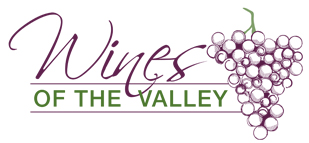Growing it Shea's way for nearly a quarter century
By KARL KLOOSTER
If you place a dozen great wines side by side, and challenge a dozen discerning tasters to tell you which one they consider the best, you'll have a sure recipe for disagreement.
The same is true of vineyards.
People don’t want wines that are dull and innocuous, or raw and tannic, but neither do they need the level of depth and nuance that carries an outrageous price tag. However, wine practitioners strive to make what they consider the very best, regardless of cost.
And nowhere on American soil does this drive seem stronger than Oregon's Yamhill Valley. Like their counterparts in Burgundy's Côte d'Or district, local growers and winemakers have something special. And they're out to prove just how good it can be.
Unlike Burgundy, Oregon has little history. The promise may be there, but the industry is only now getting enough vintages under its belt to more than occasionally assert a claim as lofty as "very best."
Inevitably, as vineyards evolve, some begin to stand out. Even in the midst of an excellent field, a few consistently show superior stuff. If this were professional sports, where almost every starter is a star, they would be the superstars.
Admittedly, some winemakers are a bit better than others. Still they all agree that what comes out of the vineyard can make or break them in any given year.
No matter how talented you are, you can't make a sweet wine out of a sour grape. And some vineyards, even in years where Mother Nature throws some tantrums, rise above the average.
One of them, Shea Vineyard, was planted east of Yamhill in 1989 by Dick Shea. He now has 140 acres on two hillsides just above Highway 240 that are planted primarily to pinot noir.
The Shea Vineyard has become highly regarded across the board. But even within the vineyard, some blocks, regarded as the best of the best, are held in higher regard than others. Each block has its advocates, both among winemakers and consumers.
For the first seven years, Shea and his wife, Deirdre, sold all of their grapes to others. In 1996, they decided to start making some their own wine, but only a little bit.
Grapes from the Sheas' 37 blocks have gone to such notable producers as Beaux Freres, Bergstrom, Boedecker, Broadley, Elk Cove, Francis Tannahill, J.K. Carriere, Ken Wright, Panther Creek, Penner Ash, Scott Paul, Stevenson Barrie, St. Innocent and Torii Mor.
With construction of a new winery, Shea uses about 25 percent of its grapes for production of its own wines, still serving other winemakers with sought-after grapes.
His original vines are not resistant to the root louse, phylloxera, and could become infected any time, so Shea instituted a program of grafting over to resistant stock on an incremental basis. Eventually, none of the original vines will be left.
Shea's vineyard includes the Pommard clone and the Wadenswill clone.
"I didn't immediately jump on the Dijon clone bandwagon, like so many others,” he said. “I think the Wadenswill on our Willakenzie soil has performed wonderfully."
However, he continued to experiment. He made wines from the younger Dijon clone fruit — further evidence that the learning process to produce the perfect pinot continues even for those with the most acclaimed terroir.
Those connected with wine have heard the word, “terroir,” again and again. Combine it with “climat,” and you have a chant any Frenchman would shout: The soil, the site and the weather is what it’s all about.
But the winegrower’s art has to be applied. Vineyard mangers prune vines to produce the correct cane measurement, spray to prevent mildew, apply mowing strategies such as moving between every other row on a rotating basis to preserve beneficial bugs that keep down pests. Every kind of measurement is tested and recorded.
Shea Vineyard is part of LIVE – Low Input Viticulture and Enology, a sustainable agriculture practices program instituted in Oregon in 1997.
More recently, Shea was recognized by the U.S. Department of Agriculture’s Conservation Security Program for the highest level of stewardship in conservation and environmental management. More than 500 Yamhill River Basic farms pursued the program, and 32 received that highest recognition.
one of 32 so-reto recognize and support outstanding stewardship of agricultural lands.
Related Content
-
Read more...
2-Intro: Growing the Grapes
Great wines must begin with quality grapes, and that’s what makes the wines of the Yamhill Valley ...
-
Read more...
Wedded winegrowers find way from Midwest to Oregon
The married team of Susan Meredith and Frank Mitchell made the transition to the Northwest
-
Read more...
Durant duo joins pioneers of the Yamhill valley vines
In the early 1970s, the Durants joined the pioneers of the Yamhill Valley vineyards industry
-
Read more...
Chapter 2 Intro: Growing The Grapes - Copy 1
Great wines must begin with quality grapes, and that’s what makes the wines of the Yamhill Valley ...
-
Read more...
Bringing in the bounty from Yamhill Valley vineyards
An inside look at some of the growing conditions faced annually by winegrowers of the Yamhill Valley


